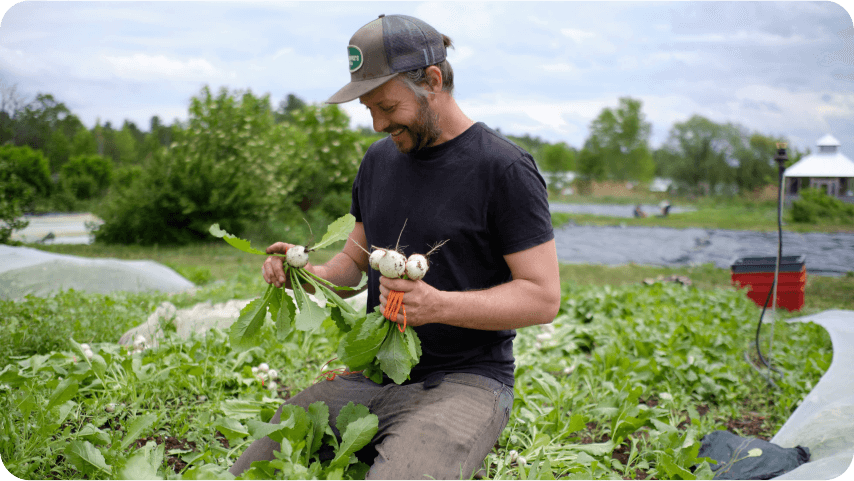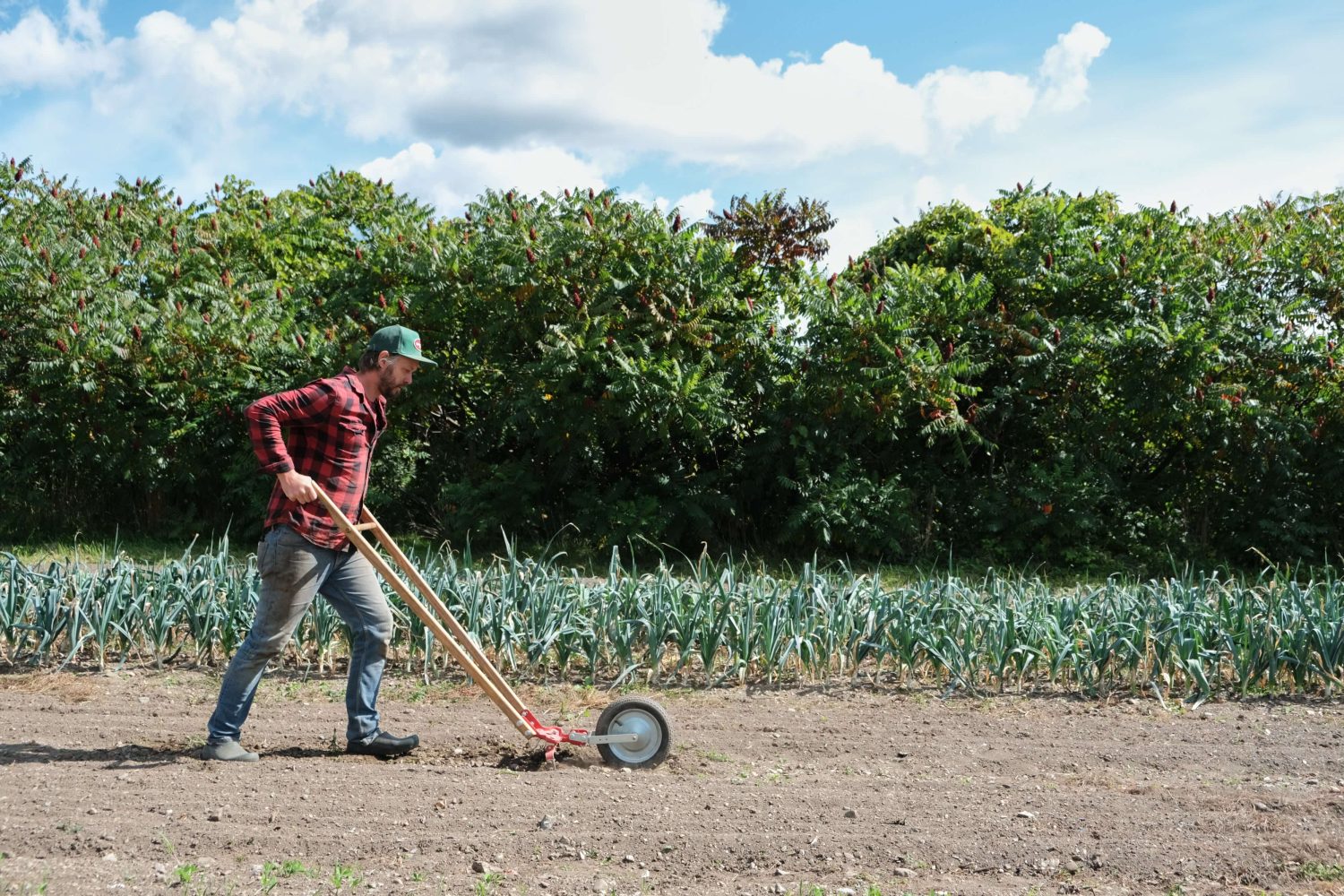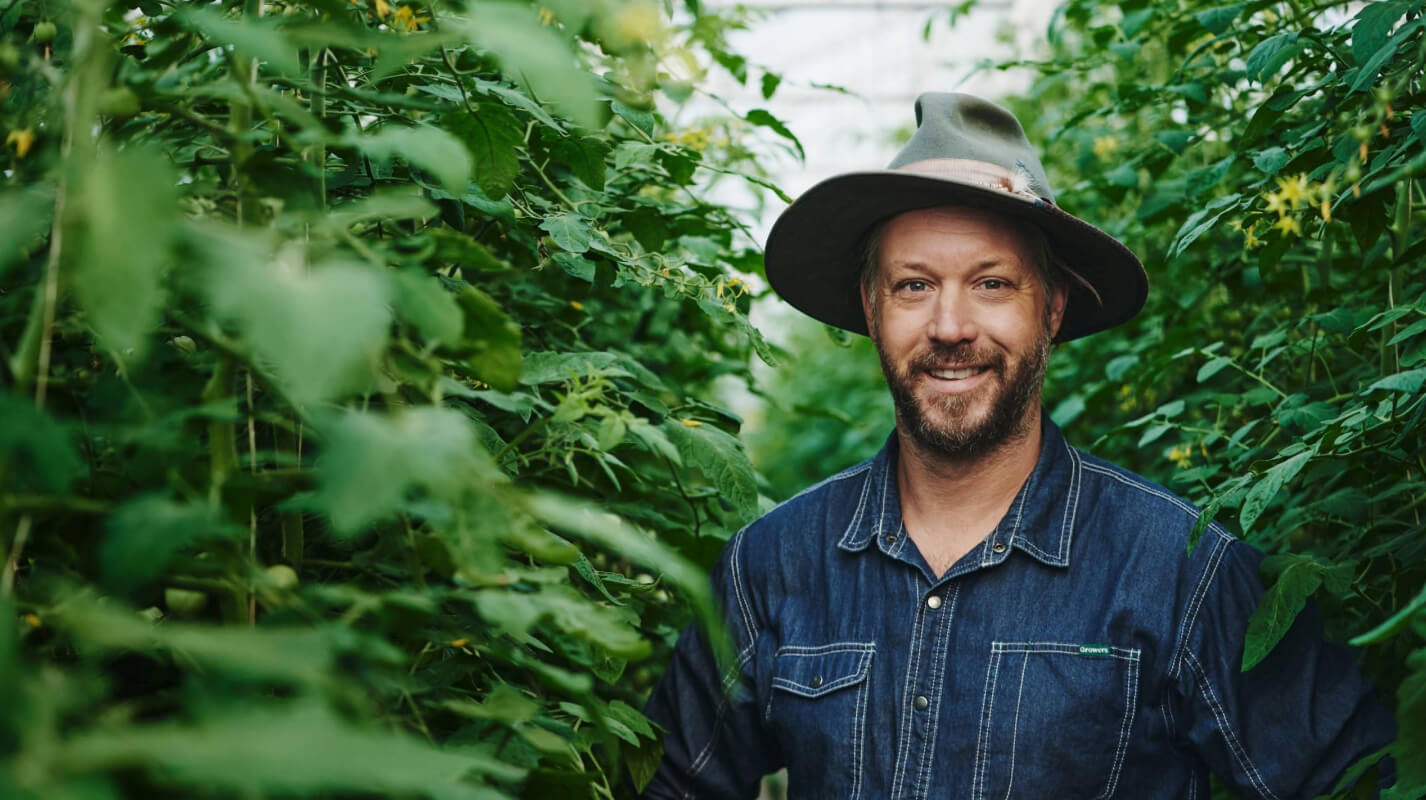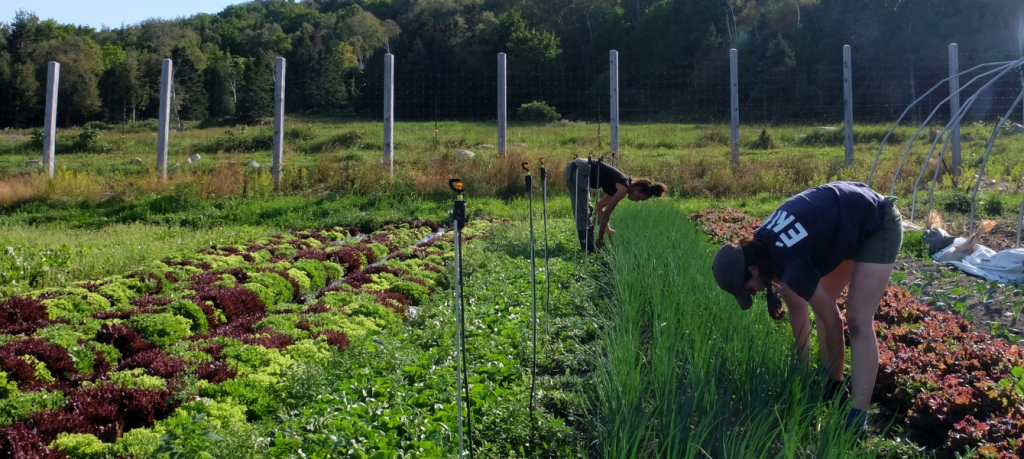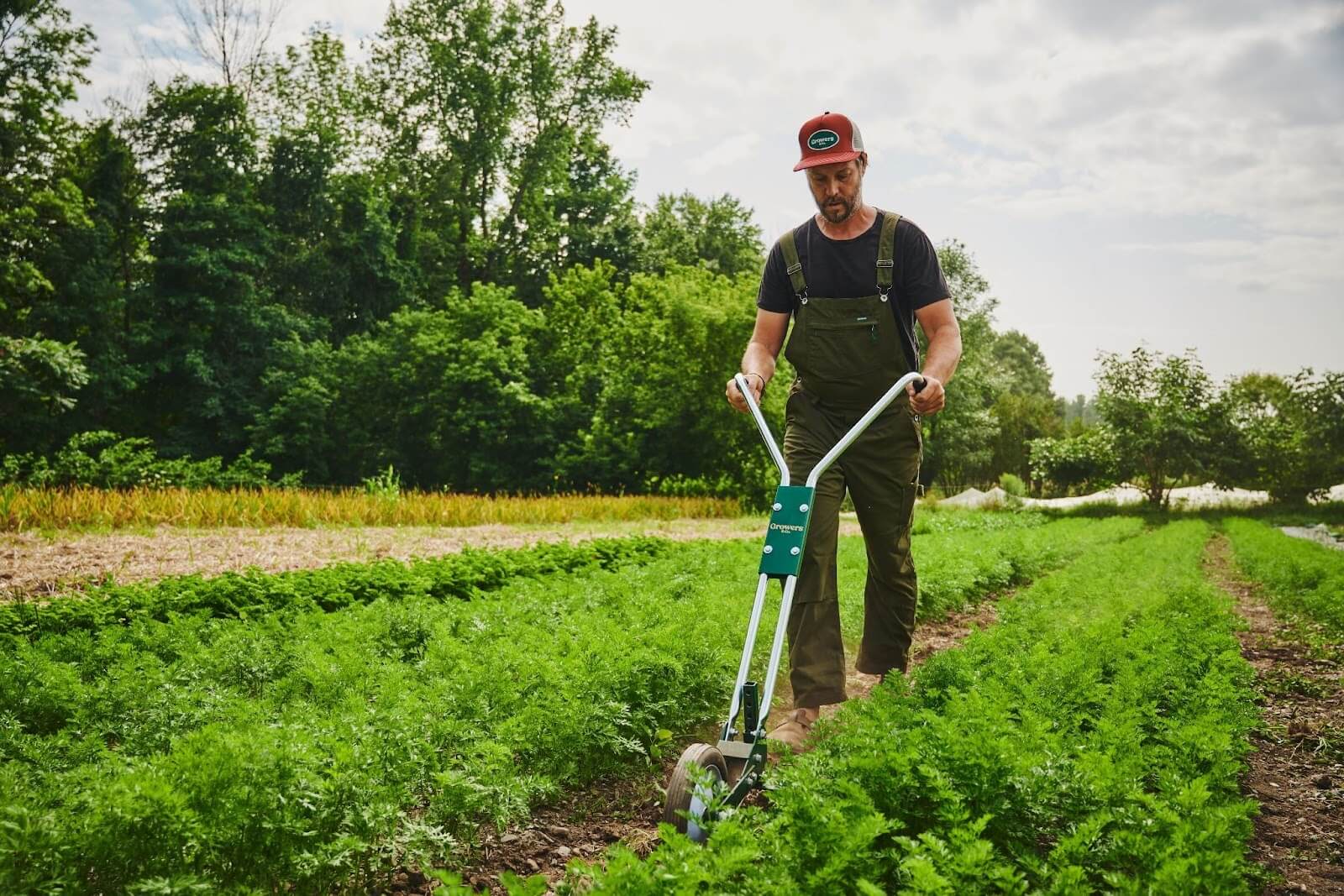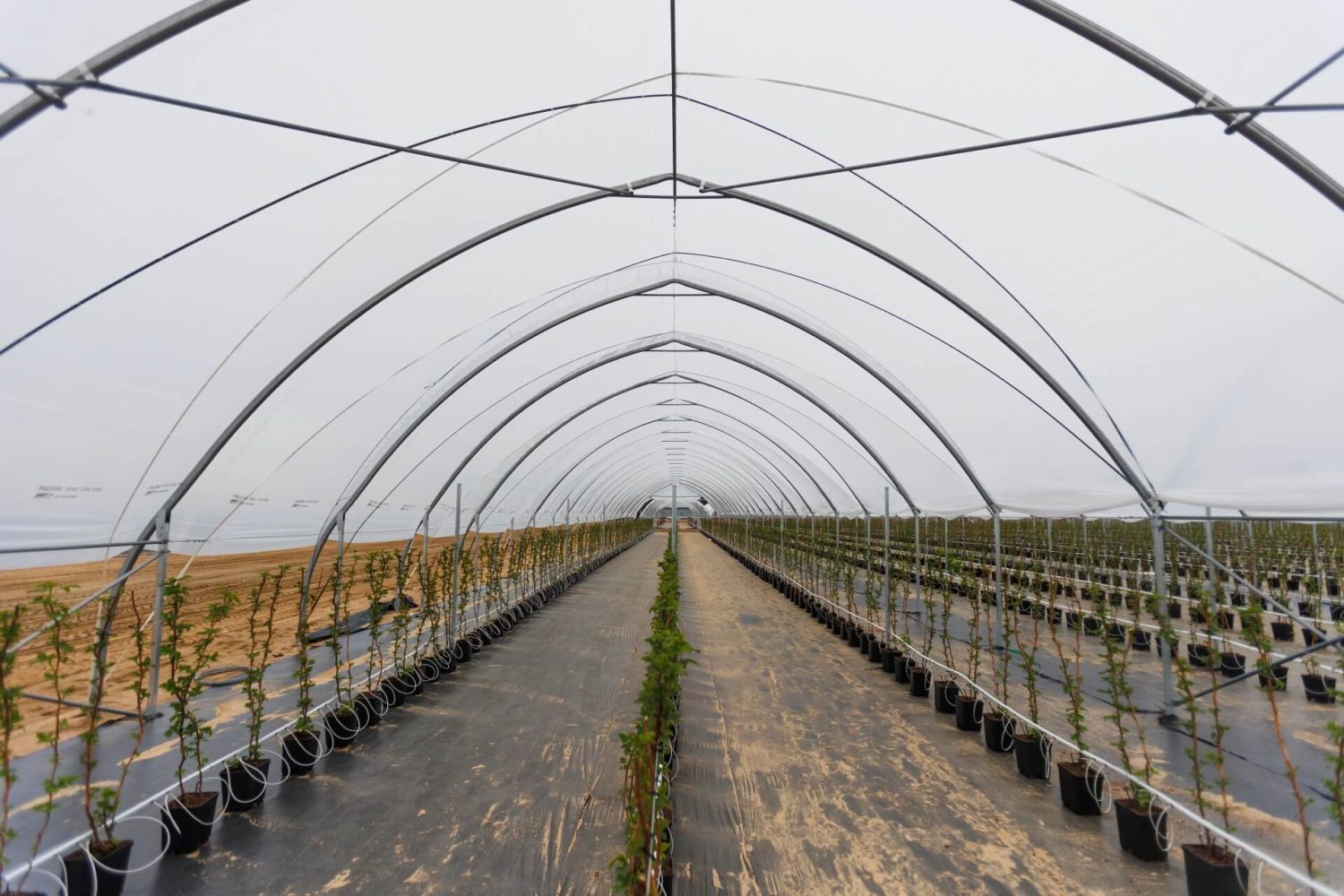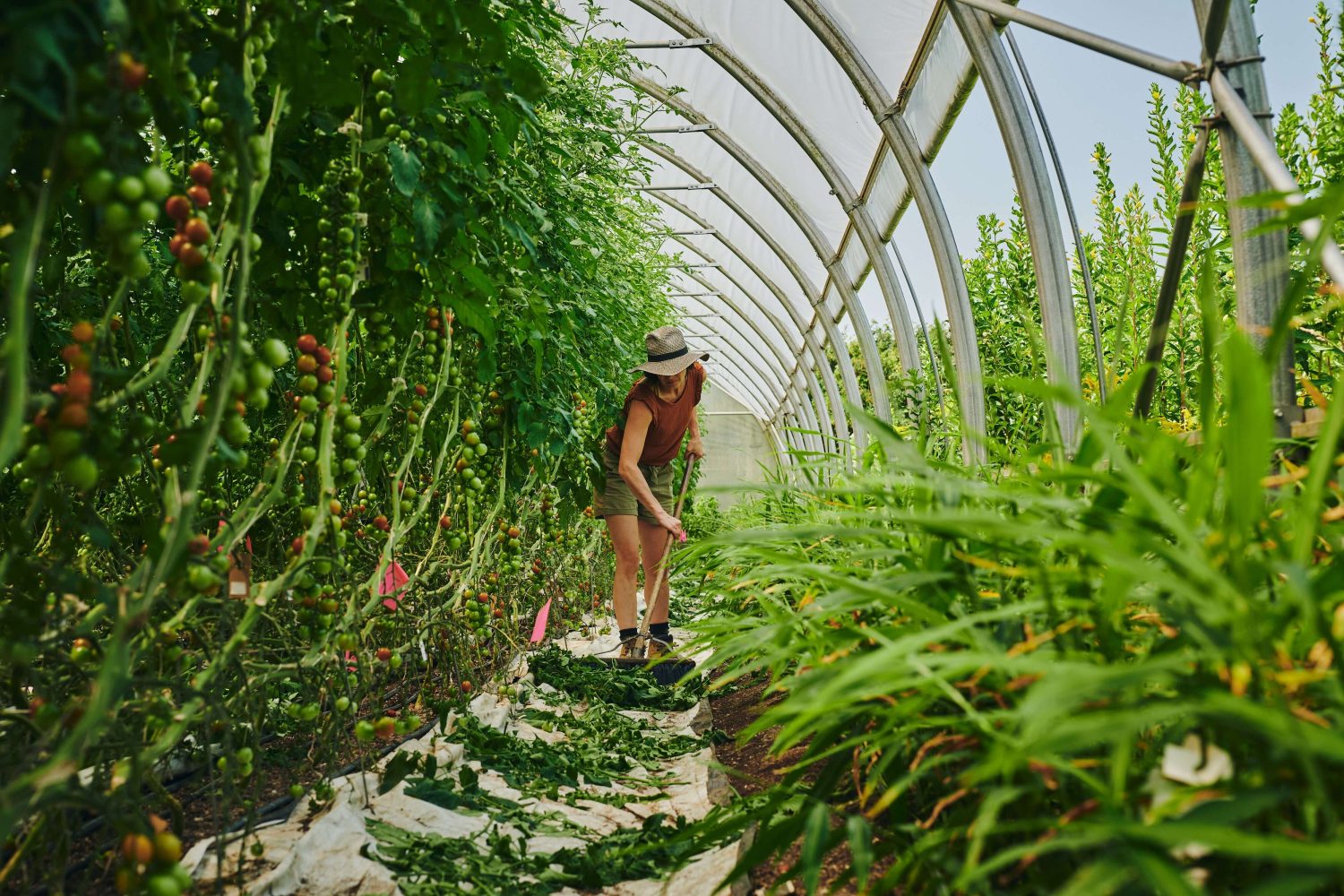As you start to plant your seeds and transplants, your soil beds will likely be impacted by one primary culprit: weeds. Weed management means everything to growers managing biointensive vegetable production.
If you don’t stay on top of weed management, all of your hard work can literally become swallowed up by the weeds. It also compete for the nutrients, space, and water that you provide to your crops. The key is to know which ones you’re dealing with and plan accordingly with the right tools, dedication, and strategies. But what works best? Here are five weed management strategies that work!
Smothering Weeds by Occultation
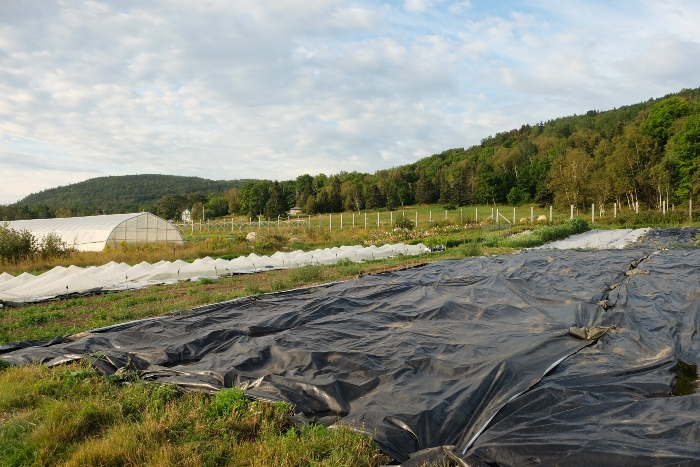
If you follow Jean-Martin Fortier’s work, you’ll quickly learn that using silage tarps, also known as occultation, is a critical method of weed control on his farms. This involves placing a black tarp over a bed that has completed its harvest and waiting for a minimum of three weeks (two weeks can work during peak heat) before transplanting your next crop. Simply put, by blocking out the light and limiting the surface area, your weeds won’t be able to grow. It will reduce your seed bank of these pesky plants!
Alternatively, if a bed won’t be used for many weeks before its next planting, sowing a cover crop, also called green manure, for weed control is a good practice. Also, it can help to boost your soil fertility and improve your soil structure.
Use Dense Planting Techniques
If you are managing a small-acreage, your approach to planting becomes ever more important – every square foot of your fields matters for what and how much you can grow (and therefore, how much of a profit you can make!). Our approach is to do dense plantings so that the crops can establish a leafy canopy that blocks out the weeds – if they can’t access sunlight, they won’t be able to grow as fast.
Using weed-free compost is also a key strategy in weed management. You need to eliminate any sources of weed seeds that may be found on the farm to reduce your weed pressure. Using weed-free compost is critical for dodging an unexpected arrival of problems.
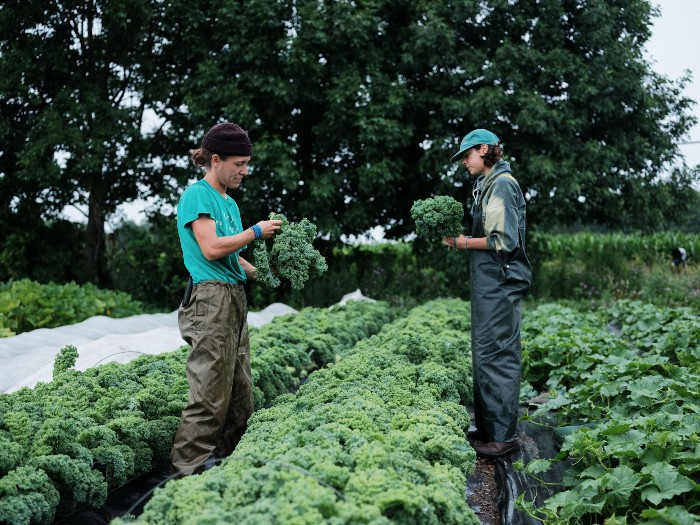
Minimal Tillage is Key in Weed Management
Jean-Martin’s approach to bed preparation involves as minimal soil interference as possible. Once you’ve built up healthy soil with quality amendments, you shouldn’t disturb the soil structure by inverting it later –if you turn it over by digging or using a rototiller you could also accidentally bring a bunch of weed seeds up to the surface. Remember: you want to eliminate your weed presence in the top two inches of your soil. To do so, you don’t need to flip the soil!
Intervene at the Right Time to Remove Weeds
Another valuable way you can keep ahead of weeds? The larger weeds grow, the more problematic they become. You can beat them from interfering with your crops when you remove them at the right stage (the cotyledon period).
At this point, the weeds have just formed a single white shoot that tells you “we’re on our way” – if they grow much bigger and develop more than two leaves, their root system will be more established and it will be much more difficult to remove them quickly and easily with tools. You’ll want to avoid hand weeding, which is not at all efficient for a busy farmer! If they get too big, weeds will also start competing for key resources such as water, nutrients, and sunlight, which will compromise the growth and health of your crops.
To be sure to intervene at the right time, block weeding time into your farm’s weekly schedule. Weed management has to be a priority.
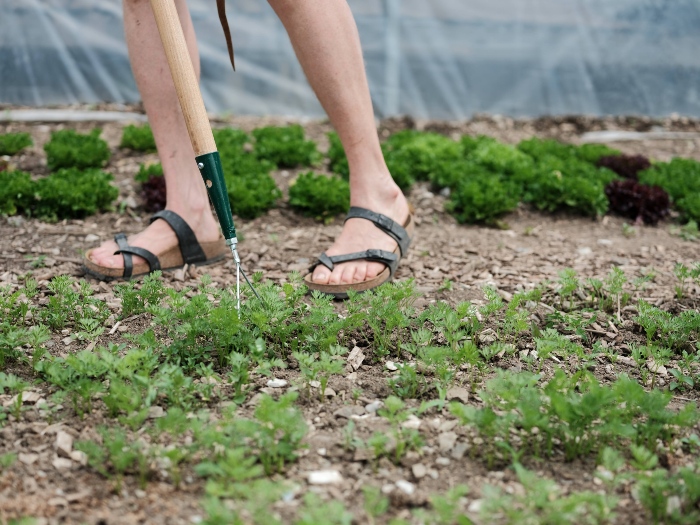
Your Friend, the Hoe
Quite simply, the most effective way to keep weeds at bay is to incorporate a regular schedule of hoeing the garden beds and using specialized tools designed for weeding. That way, your weeds will be maintained and will never overgrow your crops.
For Jean-Martin, a variety of long-handled hoes or weeders designed for shallow cultivation will help you accomplish these tasks for different types of plants. For example, we encourage using the flex tine weeder to weed crops such as radishes, salad turnips, and baby greens. These crops need to be weed-free and are easily weeded with this tool. If you’ve got a farm crew, assign the responsibility of weeding to one of your members. That way, you’ll have a person that can manage each weeding task and ensure it’s done at the right timing.
The Golden Rule in Weed Management
Overall, of all the various tricks in your toolbelt, perhaps the most important guideline is this: never let your weeds go to seed. The point of all of these strategies is to help with management and prevention, but if you let a weed go to seed, you could introduce a problem that will last for seasons to come.
If your goal is to reduce the seed bank of weeds in your fields, then staying on top of your weed management tasks is key. If they go to seed, you’ll have a LOT more work to do that will impact your ability to grow lots and lots of crops, so believe us when we say: always keep weed control in check.
